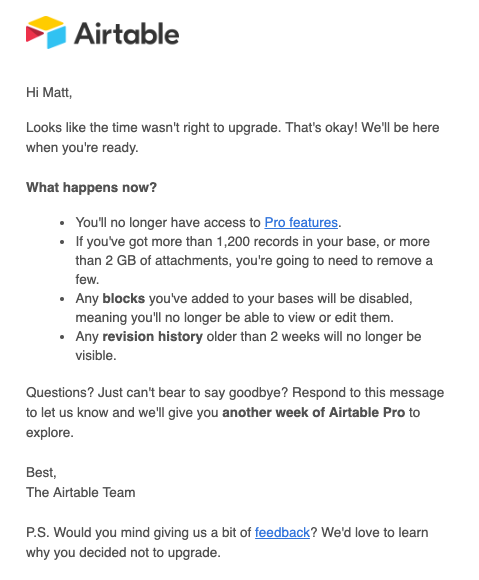It is no secret that marketing is a cornerstone for any successful business. Content marketing in particular is responsible for a big chunk of the marketing efforts we see on a daily basis. In fact, “88 percent of business-to-business companies incorporate content marketing into their overall marketing strategy.”
Content marketing encompasses a wide range of tactics and content types. It can feel overwhelming trying to figure out where to get started. Luckily, we’re here to help. These are the basics you need to know to get started in content marketing today.
What is Content Marketing?
Content marketing is a form of inbound marketing in which entertaining or informative content draws in an audience, in turn driving traffic to your website and raising awareness of your brand. This content is chiefly intended to provide value to your customers.
According to research done by Hubspot in 2017, companies spend approximately 46% of their marketing budgets on content creation alone, and with good reason. When executed properly, content marketing can be one of the most effective approaches for generating new leads and engaging with prospective customers.
But how does content marketing work? What are the best practices? And most importantly, how do you know if your content marketing efforts are successful? Read on to learn the fundamentals of effective content marketing.
Why incorporate content marketing in your strategy?
In the early days of marketing, companies relied on ads in the form of print, commercials, billboards, and more to get their brand’s message across to consumers. The problem with ads is that they do not provide any benefit to the consumer and are often, in fact, a bit of an annoyance.
Nowadays, consumers are a lot more discerning and particular about the way products and services are marketed to them. Content marketing is more suited to new-age consumers because it provides them with useful, informative content and presents the product or service as secondary. It prioritizes the customer’s needs and wants over their dollar.
Content marketing “generates over three times as many leads as outbound marketing and costs 62% less.” It is much less costly, and is effective because its purpose is to provide value to customers, rather than solely providing profit for a company at the customer’s expense.
Content marketing has benefits that extend beyond simply generating profit. It will help build your brand, and it’s authority and credibility within your industry. Creating content consistently will also help your business’s SEO efforts to help your website rise to the top of search engine results.
The Fundamentals of Content Marketing
- Provide Exclusive Content
Let’s be real, content marketing is not new by any means. It is safe to say that it is being incorporated to some capacity by most companies, and all successful companies, across all industries. In order to stand out in a sea of quality content, you must offer something different, content that only your company can create.
As we’ve already covered, content marketing is more than just a sophisticated sales tactic, it is also a fantastic tool for brand exposure. Consumers want to see past the corporate front of your company, they want to see what the culture is like, what the people behind the brand act and think like.
Content such as interviews, Q&A’s, live streams, and podcasts are excellent, exclusive types of content that will add a layer of authority and authenticity to your brand. This invites audiences to build a level of trust, that can lead to a sale, or, in an equally good scenario, give them a positive image of your brand, increasing their likelihood of recommending it to someone who might be interested in the product or service that your company provides.
- Diversify your content
To that point, there are many different types of content that you could incorporate into your strategy. Among the most common types of content are blog posts, videos, and social media posts, but the list goes on.
Providing a variety of content will not only ensure that you are reaching as many people within your niche as possible, but also opens the opportunity for a broader audience to find your content. Additionally, “diversifying content helps avoid the risk of one channel failing. It also gives you the flexibility to use multiple channels in conjunction with each other. It’s all part of a strategic content marketing plan.”
- Personalize your Content
There are few things more annoying than receiving an unsolicited email, text, or phone call from someone attempting to market a product or service to you. For this reason, it is important that any content you send out to your audience was solicited or, at least, authorized.
Similarly, personalizing the content you send out will make the individual customer feel valued. When customers feel valued, they are more likely to engage with your brand. “According to a 2015 IBM Digital Experience Survey, 56% of marketers believe that personalized content promotes higher engagement rates.” Engagement fosters trust in your brand, which is essential for converting a lead to sale.
You can personalize content by including the user’s name in any correspondence, recommending articles or videos based on their interests, offering special promotions, or asking them for feedback on a specific experience or product.

- Engage with your audience
Once your customers are engaged, it is important to engage with them. Respond to your customers’ comments on your blog and social media posts, let them know that their insights, questions, and concerns are not only being read, but acknowledged and taken into consideration.
In the same sense, taking your customer’s concerns seriously will help you improve your business. It is the most important feedback your company can receive, and implementing changes based on this feedback will show your customers you care about optimizing their experience. Additionally, if one customer has a concern it is likely that others do too, or will in the future. Making adjustments based on customer feedback will likely improve your product or service for all current and future customers.
- Be mindful of Keywords for SEO
Search Engine Optimization is a critical part of any content marketing strategy. SEO will allow your website to rank at the top of search engine results organically, making it more likely for customers to click your link over others.
Research shows that “95% of people only look at the first page of search results.” You want to do everything you can to ensure that your content lands on that first page.
SEO will also help guide your content. You can narrow your focus to the keywords that are relevant to your industry and in line with what your customers are searching for. This applies primarily to blog content, but you can also optimize things like your video titles and social media copy as well. If you’re interested in learning more about SEO, check out the video below.
- Link to industry leaders
This one seems a bit counterintuitive. The first thought is: Why would I promote content by the companies I am competing with? However, when considering the importance of backlinking, it becomes evident that interacting with other leaders in your industry will ultimately work to your benefit.
According to an article by BackLinkO, “Pages with a high number of backlinks tend to have high organic search engine rankings.” The more you link to your competitors, the more likely you are to get links in return. Even if you don’t get links back, a third party might see your brand associated with a popular brand and include you in a post comparing different businesses in your industry.
Surely you’ve heard the cliche that no publicity is bad publicity. Well in this case, it’s pretty spot on. Even just having your product or service in the same conversation as the most successful companies in your industry is a major plus.
How to Effectively Implement Content Marketing Strategies
Content Marketing may seem straightforward, but in reality there is a lot of strategizing and research that goes into it before it can be properly executed. For an in-depth description on creating a content marketing strategy, check out this blog.
In the meantime, here are the basic steps you will want to take to ensure that your content is getting the ROI it merits:
- Set a Goal
This is actually a bit misleading. It is simplistic to assume that your company will only have one goal throughout its entire longevity.
Of course, every company’s ultimate goal is to make sales. But, in order to truly engage your audience with your content, you must make your goal user-centered. Set an overall goal based on what you want your customers to achieve through using your product. For example, Hubspot’s goal is simply that they want their users’ companies to “Grow Better.”
After you’ve established a user-centered goal, you can determine what smaller goals you may have. They can range from “Gain 100 new followers on Twitter in the next month” to “Establish my company as a leading competitor within the next 5 years.” All of your marketing efforts should be based on reaching these goals, while keeping your company’s overall goal in mind.
When setting a goal, make sure that it is practical, measurable, and that you are setting a reasonable time frame for accomplishing it.
- Research
After you’ve set a goal, you’re ready to embark on a thorough research process. You need all the insight you can muster on your target audience, and their needs, interests, and habits.
Some questions to consider are: Who is your brand targeting with their marketing efforts? What kind of content are they interested in seeing? Where does your audience consume most of their digital content? What platform should you post your content to?
Remember, content marketing is centered around the customer, and that is exactly where your research should begin. Look into the type of consumer that is typically interested in either your product or service or similar ones from competing brands. Study their age range and demographics to get a better understanding of what platforms they frequent and what type of content they usually engage with.
Once you pinpoint your target audience, a good next step is to analyze your competitors and their efforts. What type of content are your top-performing competitors putting out, what’s actually working for them?
This information will help you figure out exactly what type of content will work best for your industry, and what type of content your audience will most likely respond positively to. Every company is different, however, so it is important to continue this research process even after you’ve posted your content.
- Get Organized
When you have a good grip on the type of content you will be creating, you can start getting organized. Your content should go out on a consistent basis, as this is another way to gain the trust of your audience. It is helpful to keep track of your content using a content calendar.
A content calendar is a tool you can use to schedule your content across various different platforms. It will ensure that you have content going out on a regular basis. You can use an automated tool for this, such as TeamUp or Hootsuite, or you can simply keep track of your content on a virtual or printed calendar.
If you have a new idea for a blog, you can immediately add it to your content calendar so that it does not get lost among other tasks. This will give a more cohesive feel to your content, which will make it easier to execute on your part and easier for your audience to consume.

- Craft quality content
Obviously, this is much easier said than done. Knowing what and when you will be posting is one thing, but it is paramount that you craft high quality content that provides value to your audience.
You want to create content that sparks your audience’s interest. That is, content that makes them think, answers a question, addresses a concern, or, simply, entertains them. You also want your content to be original, content that your audience cannot get anywhere else.
Ask questions that readers can answer in the comments, provide them with resources and examples to better illustrate the information you provide them with, and give them tips on how they can apply that information right away.
Check out this article for the best practices to consider for all of your diverse types of content.
Additionally, creating a catchy headline is essential in quality content. It is the tip of the iceberg, sure, but it is a strong start. “Consider these great statistics from Copyblogger: 80% of people will read your headlines. But only 20% of those people will read the rest of your content!” You can measure the strength of your headlines using tools such as CoSchedule’s Headline Analyzer.
- Analyze
Lastly, keep track of your content’s success through analytics and metrics. It makes no sense to pump out premium content if it is simply not connecting with your audience. You must keep track of what content is driving the most traffic and engagement in order to better streamline your efforts.
Some metrics you can track include: Organic traffic to your website and the sources for this traffic, Click-through, Conversion, and Bounce rates, as well as the amount of post engagement and shares your content is getting.
In addition to helping you identify what content types and platforms your audience is consuming most of your content on, these metrics and analytics will also give you insight on things that may not be working so well. For example, you might find that some of your blogs are doing really well, while others are falling short. This could mean that it’s time to revamp your old content with some new keywords or updated information.
Conclusion
There are a lot of intricacies that go into content marketing. However, the best way to learn what works is to start doing. It is truly a process of trial and error, but once you hone your strategy, the payoff will be worth it!
SEE FOR YOURSELF
Watch an overview to learn how B2B marketing automation by Mirabel Technologies can help you increase traffic, optimize your funnel, drive more leads, improve conversions, and boost ROI — at a price you can afford!

